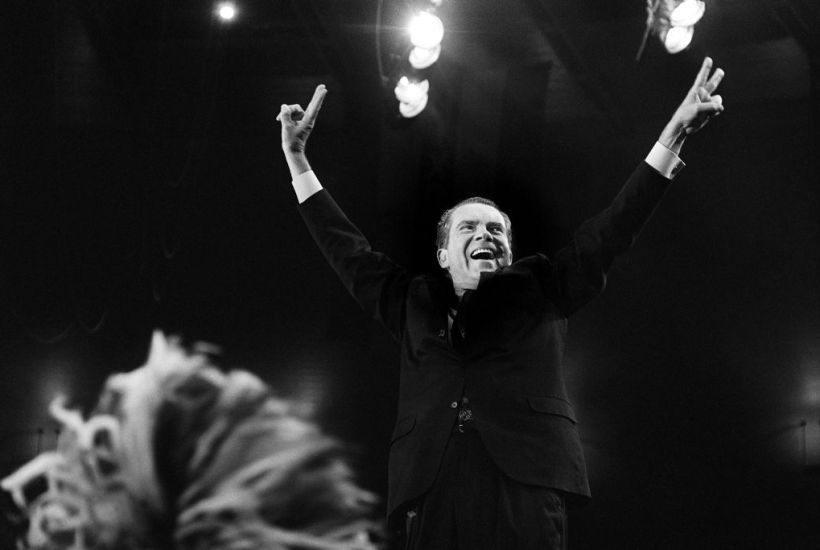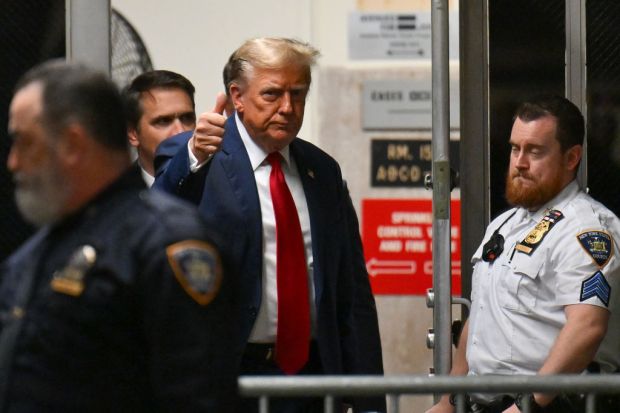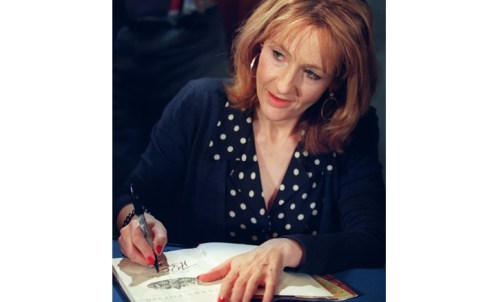Has the reputation of any American statesman been more effectively trashed than that of Richard Milhous Nixon? Donald Trump’s, perhaps – certainly the forty-fifth president inspires loathing on a scale matched only by the thirty-seventh.
Nixon and Trump have a few other points in common. Both men built coalitions through appeals to forgotten voters. They spoke to Americans who were frightened by rapid and destructive social and economic change. Both were denounced as fascists and standard bearers of the most reactionary forces in American life, yet in fact both governed with substantial moderation.
Nixon and Trump prove the truth of Marx’s quip that history repeats itself first as tragedy, then as farce. Nixon is the tragedy; Trump the farce.
That’s why the parallels between the two men only go so far. Nixon was serious, studious and quiet; Trump a loudmouth braggart who revelled in his cartoonish persona. Nobody fought harder to win the presidency than Nixon, who survived two devastating electoral defeats before his ultimate triumph. Trump jumped straight to the presidency with no real political experience and winged everything all the time.
His mysteriousness stems from the weirdness of his character. He was an extraordinary mixture of the good and the bad, the heroic and the terrible.
Nixon was laid low by scandal. Trump’s shamelessness meant that scandals didn’t hurt him. Donald Trump wouldn’t have resigned over Watergate; he probably couldn’t ever understand why Nixon did.
There is a better comparison: one that Nixon felt himself. It is with the nineteenth-century British prime minister Benjamin Disraeli. The politician, diplomat and sociologist Daniel Patrick Moynihan once recalled giving Nixon a list of his ten favourite political biographies. These included more than 4,000 pages of reading on figures as varied as Hitler, Talleyrand and the Mexican revolutionary Emiliano Zapata.
Five weeks later, Nixon had read the lot. His favourite was Robert Blake’s magisterial portrait of Disraeli. Nixon could see much of himself in the great Victorian statesman. He had none of Disraeli’s flamboyance. Yet, like Dizzy, Dick was an outsider who overcame monstrous obstacles to reach the zenith of power.
‘Though I sit down now,’ said Disraeli, famously, having been jeered at in his first speech in the House of Commons, ‘the time will come when you will hear me.’ Those words would have spoken deeply to Nixon, who always felt mocked and shunned by Washington and the respectable classes.
It was from Disraeli that Nixon summoned inspiration for the political vision of his triumphant first term. ‘It is the Tory men with liberal policies who have enlarged democracy,’ he told Moynihan after finishing Blake’s book.
Years later, Nixon openly touted Disraeli as his role model: ‘My view, my approach, is probably that of a Disraeli conservative – a strong foreign policy, adherence to basic values that the nation believes in and the people believe in, and to conserving those values, and not being destructive of them, but combined with reform, reform that will work, not reform that destroys.’
Nixon is often called an enigma. Yet he is arguably the president about whom we know more than any other. Thanks to the Watergate tapes, his lengthy memoirs, and his own inclination to mix the personal and political, almost nothing from Nixon’s life remains hidden.
His mysteriousness stems from the weirdness of his character. He was an extraordinary mixture of the good and the bad, the heroic and the terrible. He was a man capable of kindness: at law
school, for instance, he befriended a disabled man and carried him up the steps to class – yet he could be equally cruel and intensely vicious.
He combined immense self-belief with almost crippling awkwardness, unlike his great rival John F. Kennedy, who valued style over substance. Kennedy represents the sunny image Americans like to project to the world. Nixon is the more troubled reality. Nixon was born into an America that was still transforming from frontier upstart nation into a global superpower. His nearest home city, Los Angeles, exemplified that transformation. During Nixon’s childhood, Los Angeles quadrupled in size and changed from the regional hub of California’s rich agricultural lands to the garish heart of the global entertainment industry. Nixon was not part of that explosive growth. His most formative years were spent a few kilometres away in the quiet Quaker colony of Whittier, where his devout parents ran a small shop. His family suffered great loss. Two of Nixon’s brothers died of tuberculosis. Some of the family believed the deaths to be God’s punishment for the Nixons having kept their store open on the Sabbath.
Nixon’s early setbacks moulded his character, for better and worse, and instilled in him the fierce resentments that would drive him to the White House. A brilliant boy in high school, he ran for student body president, only to suffer an embarrassing defeat to a jock who seemed to barely want the job. Offered a scholarship to Harvard University out of high school, Nixon was unable to attend due to his older brother’s tuberculosis and the need for him to help at the family store.
He attended the local Quaker-affiliated Whittier College instead. Even there, he found himself excluded from the elitist Franklin Society. He founded his own Orthogonian Society as a competitor. After graduation, Nixon attended the brand-new Duke Law School, only then to be rejected by an elite law firm after the hiring partner condemned his ‘shifty-eyed’ demeanour.
For the rest of his life Nixon would carry that burden of social insecurity. His sense of his own lack of pedigree, or separation from privilege, hardened into a deep distrust of and hostility towards America’s elites. Later in life, as he vetted cabinet picks for his second term after winning re-election to the White House, he told H.R. Haldeman: ‘No goddamn Harvard men, you understand? Under no condition!’ It is worth noting, however, that Nixon’s class prejudices were not resolute: the Harvard men of his administration included Defense Secretary James Schlesinger, Health Secretary Caspar Weinberger, Attorney General Elliot Richardson, and his Secretary of State Henry Kissinger.
After graduating, Nixon met Pat Ryan when they were cast together in a local theatre production of comedy called The Dark Tower (comical darkness is a strong Nixonian theme). He played the young playwright, she the seductive vamp. Nixon was smitten and he won Pat’s heart the way he would later win the presidency: remorselessly. His initial advances rebuffed, he courted her for two years, even driving her to dates with other men, before she finally acquiesced. A very hard worker herself, Pat came to see in young Dick a similar determination to get on and an ambition to achieve great things. They made a formidable pair.
‘Progress without mayhem’ effectively became Nixon’s mantra, and in office he was much more liberal than the myth surrounding him suggests
In 1942, Nixon left a bureaucrat’s job in Washington for a naval commission and served three years in the South Pacific. He saw some action: at the front on Bougainville Island, near Papua New Guinea, Nixon’s hut was destroyed by Japanese artillery as he hid in a nearby foxhole. He also took part in the invasion of Green Island.
It was on Green Island that he discovered the game of poker, an important moment in his life. Gambling, like many other diversions, had been frowned upon in the Nixon home, and by some accounts Nixon never played cards at all before his enrolment. But he mastered the game. He spent hours practising and observing before he risked any of his own money. He then developed a patient strategy that played to his intellect and self-control.
Nixon returned home from war with some $8,000, much of it from poker winnings, and he used this money to finance his first congressional run. He then defeated the Democrat intellectual Jerry Voorhis in the twelfth congressional district of Los Angeles County. His victory was down to his tireless campaigning, backing from local money men, and a touch of cynical ‘red baiting’ – he successfully insinuated that Voorhis had ties to communism.
Nixon’s political ascent was brisk. He went from congressional neophyte to vice-president in just six years. His career and reputation, for better and for worse, were established in 1948 with his vigorous investigation of Alger Hiss. Hiss was an esteemed State Department veteran and president of the Carnegie Endowment for International Peace, who played a central role at the Yalta Conference and in the establishment of the United Nations. But in 1948, Whittaker Chambers, an editor and writer at Time, testified to Congress that in the 1930s he and Hiss had both been communists who spied on behalf of the Soviet Union. Hiss entrapped himself by not only denying the espionage charge, but claiming to have never met Chambers at all. Nixon’s vigorous investigation ended with Hiss’s conviction for perjury. This destruction of a distinguished public servant has long been regarded as an example of excessive ‘McCarthyist’ zeal, although Nixon never stooped to Senator McCarthy’s low tactics. Later, the fall of the Soviet Union, and the release of the Venona Transcripts, helped establish that Nixon had almost certainly been right.
The Hiss case ensured that Nixon would always be an enemy of the progressive left. Yet the hatred grew even hotter in 1950 after his Senate race against Helen Gahagan Douglas, LBJ’s not-so-secret lover and the quintessence of the mid-century bleeding heart. Nixon’s smear of Douglas as the communist-sympathising ‘pink lady’ is well remembered, and the successful campaign won him his ‘Tricky Dick’ moniker. What is less well known is that Douglas fired the first shot of that bitter clash, accusing Nixon of pushing ‘nice, unadulterated fascism’. Similar to America in the second world war, Nixon did not start the conflict, but was happy to win it with overwhelmingly superior firepower.
Nixon’s career nearly ended in 1952, just months after being chosen as Dwight Eisenhower’s vice-presidential nominee, when the press targeted him for the existence of a $18,000 political activities fund, paid for by Nixon’s donors. The fund gave Nixon the means to travel and build his reputation as a national politician. In fact, Nixon broke no law and never misused the money, nor is there any evidence of political favours granted in exchange for donations. The fund wasn’t even a secret, while the Democratic nominee Adlai Stevenson really did have a secret slush fund for personal and political expenses.
Nevertheless, a campaign to have Nixon replaced as Eisenhower’s running mate was launched. Vipers within the Republican party lobbied for Nixon’s resignation. DNC chairman Stephen Mitchell sneered that men who could not afford to be senators ought not to run for the Senate. Eisenhower himself stood aloof, telling Nixon to save himself if he wished to stay on the ticket.
Nixon did save himself, brilliantly. On 23 September, in a national television address (one of the first of its kind), Nixon laid bare his meagre wealth: he had no inherited fortune like Stevenson, he said, only his $15,000 Senate salary and twice that in debts.
He told America about his 1950 Oldsmobile, the paltry inheritances he’d received, and that he’d never been able to afford a mink coat, so Pat got by with a ‘good Republican cloth coat’. He did admit, mawkishly, to accepting one generous donation – the gift of a cocker spaniel, called Checkers, from a man in Texas.
The stunt, now known as the Checkers Speech, struck something deep in the American psyche. Nixon asked voters to decide his fate, and they did: more than four million telegrams, letters and phone calls poured into the Republican National Committee with a 75-to-1 ratio in support of Nixon. Eisenhower and Nixon swept to victory in November.
Nixon’s career was saved, but never safe. Four years later, Eisenhower tried to ease Nixon off the ticket by offering him his choice of cabinet seat. Nixon declined. He had eyes on the White House.
In 1960, he won the nomination and found himself in a battle against JFK, who though Catholic was infinitely more privileged than a WASP (White Anglo-Saxon Protestant). Nixon lost very narrowly, though, unlike Trump, he refused to pursue claims of electoral fraud.
Against his better judgement, Nixon then turned his attentions to the humbler goal of becoming governor of California, only to lose again very narrowly to Pat Brown, a disappointment he marked with a famously bitter speech in which he told the press that they ‘don’t have Nixon to kick around any more’.
The press did not stop their kicking. Just five days after his defeat, ABC broadcast ‘The Political Obituary of Richard M. Nixon’, an hour-long special on Nixon’s demise, featuring an interview with none other than Alger Hiss.
Humiliation only hardened Nixon’s resolve. From that low, he made a Lazarus-like comeback. In 1964, most national Republicans avoided the doomed Barry Goldwater campaign. Nixon, by contrast, campaigned harder for the Arizona senator’s candidacy than perhaps Goldwater himself. The effort boosted his reputation and helped make him a favourite for the 1968 election, which he duly won.
A dark legend has built up around that 1968 campaign. The legend accuses Nixon of igniting America’s culture wars in his bid for power, and re-founding the Republican party as a Southern party built on a bedrock of racism, neo-segregation and opposition to civil rights.
This is largely myth. Nixon’s political strategy in the South was forthright and stated in his own writings at the time. He wrote in 1966:
‘The Republican opportunity in the South is a golden one; but Republicans must not go prospecting for the fool’s gold of racist votes. Southern Republicans must not climb aboard the sinking ship of racial injustice . . . Republicans should adhere to the principles of the party of Lincoln. They should leave it to the George Wallaces and the Lister Hills to squeeze the last ounces of political juice from the rotting fruit of racial injustice. But respect for human rights means respect for the laws which protect those rights. The racial problems which will confront the South in the years ahead must be settled in the courts – not decided in the streets.’
Nixon’s pledges to protect law and order were not devious covers for racism, but a reaction to the genuine terror millions of Americans felt. America in the late 1960s was convulsed by social trauma. In August 1965, one week after the passage of the Voting Rights Act, a black man’s arrest for drunken driving caused the Watts neighbourhood in Los Angeles to explode in an orgy of rioting and looting. Thirty-four were killed, $40 million in property was destroyed, and 14,000 National Guardsmen were called in to restore order.
In 1967’s ‘long, hot summer’, more than 150 race riots broke out across the country, claiming more than 80 lives. In April 1968, Martin Luther King was slain and another wave of rioting killed 43. A month later, Robert Kennedy was shot and killed in turn. That summer, the Democratic Convention in Chicago turned into a street war between police and hippie protesters.
A sense of plunging chaos prevailed. Between 1962 and 1968, the American murder rate rose by 50 per cent. Robberies and auto thefts doubled. The liberal project America had voted so enthusiastically for in 1964 seemed to be falling apart.
Nixon didn’t appear with a promise to turn back the clock. True to his idea of benign Toryism, he offered to chart a course for progress without indulging mayhem. ‘In a civilised nation no man can excuse his crime against the person or property of another by claiming that he, too, has been a victim of injustice,’ Nixon wrote in Reader’s Digest in 1967. ‘To tolerate that is to invite anarchy.’
The nation was eager for such a message. Charting a middle path between Lyndon Johnson’s vice-president Hubert Humphrey and segregationist George Wallace, Nixon won 32 states, 301 Electoral College votes, and the presidency.
Contrary to the ‘racist Southern strategy’ myth, Nixon lost four of the five Deep South states Barry Goldwater had won in 1964. Segregationists were happily voting for George Wallace’s campaign. Nixon’s wins in the Carolinas, Virginia and Florida were not built on rural areas, but on voters, many of them transplants, in the South’s new cities and burgeoning suburbs.
‘Progress without mayhem’ effectively became Nixon’s mantra, and in office he was much more liberal than the myth surrounding him suggests. The Supreme Court case Brown v. Board of Education had ordered public school desegregation 14 years earlier, but it took the Nixon administration to carry it out.
When he took office in 1969, more than two-thirds of black children in the South still attended all-black schools. In 1974, that number had fallen to just 8 per cent. Almost all of that shift took place in a mere handful of months in 1970. The policy was not altogether a success, and the issue remains a source of great bitterness, but Nixon skilfully took the political sting out of the integration process by sapping it of drama. Rather than threatening Southern states with harsh federal interventions, Nixon offered the reward of federal education dollars, which would only be available to states and districts making adequate progress on integration.
Nixon knew that the South would never comply if integration seemed a humiliating submission, so instead he offered the Southern states a cooperative path forward with substantial local control. He also made it clear that, if progress wasn’t made, his administration would have no choice but to use intrusive federal court rulings.
Bi-racial committees were established for seven holdout Southern states. In contrast to what would be the norm today, the work was not relentlessly promoted to the press. Nixon knew that black members of the committees would fear the ‘Uncle Tom’ label, while the white members would fear being smeared as ‘n____-lovers’. A low-key approach was better. The result proved to be one of the rare examples in American history when ‘forming a committee’ solved a real problem. Hitherto recalcitrant states abolished their two-track school systems.
The image of Nixon as a bloodthirsty maniac is more liberal fantasy than truth.
The integration of America’s public schools was arguably the single most dramatic shift in American race relations since emancipation a century before, yet at the time Nixon received little credit, and sought even less. George Romney and Robert Finch were told not to boast about the administration’s efforts. Nixon achieved integration without humiliating its opponents, without indulging radicals, without new deployments of federal troops.
He employed similar strategies across a range of divisive issues in American life. His ‘New Federalism’ devolved federal programmes to decentralised state control via block grants. He made progress steady and deliberate rather than showy and divisive.
Nixon surprised Democrats by stealing the environmental issue from them. Between 1970 and 1973, at Nixon’s urging, Congress passed the National Environmental Policy Act, the Ocean Dumping Act, and the Endangered Species Act. It also drastically expanded the Clean Air Act and created the Environmental Protection Agency and National Oceanic and Atmospheric Administration. Internationally, Nixon negotiated the CITES treaty governing international efforts to protect endangered species and prevent their international trafficking.
Some of Nixon’s initiatives failed, yet showed vision in the failure. His Family Assistance Plan would have set an income floor for families with children, expanding the social safety net and simplifying the complex morass of federal welfare programmes. However, it was rejected by Congress, as was his bid for universal health insurance, scuttled by Democrats who hoped for a more liberal programme that never came.
Nixon’s finest achievements arguably came in foreign policy. ‘The greatest honour history can bestow is the title of peacemaker,’ he said in his first inaugural address. Nixon didn’t carry his Quaker beliefs into adulthood, and he was no pacifist, yet his administration did more than any other in the Cold War to scale back American hostilities abroad.
The obvious exception is Vietnam, which proved as complicated a failure as it was a challenge. Again, though, the image of Nixon as a bloodthirsty maniac is more liberal fantasy than truth.
So enduring is hatred of Nixon that millions today may live under the mistaken impression that he started the Vietnam War, or at least greatly expanded it, and only his downfall finally ended it. The reality is almost the opposite. It is often claimed that Nixon scuppered Johnson’s peace talks for electoral advantage – LBJ thought as much – and there is no doubt that he can be accused of playing base politics with American and Vietnamese lives. Still, when Nixon took office, there were 550,000 US combat troops in Vietnam. By the spring of 1973, there were none.
The more controversial actions Nixon took, from increased bombing of the North to attacks on Viet Cong supply lines in neutral Cambodia, were done with the aim of bringing about the ‘peace with honour’ he had promised America. To achieve that, Nixon needed to bring the North Vietnamese to the negotiating table, which they had abandoned in 1969, promising to stay away until the chairs assigned to them rotted. The bombings, however awful, succeeded in this regard, persuading the North to restart negotiations and, eventually, winning the release of American prisoners of war.
Nixon hated communism and clearly hoped that South Vietnam could be preserved without ever greater American loss. His policy of ‘Vietnamization’ was meant to do that, gradually withdrawing US forces while bolstering South Vietnamese capabilities and sheltering the country with American airpower.
In the end, Nixon’s strategy failed. South Vietnam collapsed two years after America’s exit, as Nixon knew it would. ‘Peace with honour’ is now a term used only sarcastically. But Nixon’s record on Vietnam appears considerably more admirable today than, say, George W. Bush’s in Iraq and Afghanistan.
When it came to the wider challenge of the Soviet Union, Nixon developed the policy of détente, and his efforts bore fruit. His administration negotiated the SALT I agreements in 1969, producing the first limits on the size of nuclear arsenals and restricting the deployment of anti-ballistic missile systems. His unilateral termination of America’s biological weapons programme led in turn to the International Biological Weapons Convention three years later.
The march of history has given a sour tinge to what was once almost unanimously regarded as Nixon’s greatest diplomatic coup: the rapprochement with communist China in 1972. For decades, the opening of China seemed like the supreme triumph of Cold War realpolitik, an inspired move in the national interest. Nixon’s own library treats his China visit as the signature accomplishment of his presidency. Only Nixon could go to China, and go to China Nixon did.
Whether he should have gone remains up for debate. When Nixon toasted Mao in Beijing, William F. Buckley wrote that it was ‘as if Sir Hartley Shawcross had suddenly risen from the prosecutor’s stand at Nuremberg and descended to embrace Goering and Goebbels and Doenitz and Hess, begging them to join with him in the making of a better world’.
 (Photo: Getty)
(Photo: Getty)
China received much from Nixon’s initiative: acquiescence to its permanent seat on the UN Security Council, military intelligence on the Soviet Union, access to air and radio technology, and eventually fully normalised relations, all while making no concessions on the freedom of its people or the eventual fate of Taiwan.
At the time, Nixon was praised for his opening China to the world with an unpredictable combination of threat and charm.
Today, however, with China poised to match and eventually surpass America as a global superpower, Nixon’s victory feels empty. By outsourcing technology and manufacturing in China, Nixon helped kickstart its growth without liberalising the country in the process. The Chinese Communist Party was and still is a despotic regime. But today it is far, far richer.
Nixon himself later acknowledged the peril. Before his death, he reflected that in China, ‘We may have created a Frankenstein.’
But no man can see one year into the future, let alone 50. There were many opportunities to change the nature of China’s rise, and later presidents, notably Bill Clinton, failed the world more in that regard. In the 1970s, however, it seemed that Nixon had faced down an enemy and turned it into a partner, thus validating America’s role as global peacemaker.
Nixon’s re-election year, 1972, saw him at his apex. Hated as he might have been by Rolling Stone and the New York Times, he remained popular among the public. The war in Vietnam was ending, riots were subsiding, the economy was growing. If crime was still rising, many Americans at least felt the president was on the side of law and order. His electoral matchup with the Democrat George McGovern was a lopsided bloodbath. Nixon won the popular vote by 33 points and won every state except Massachusetts. In 19 states, McGovern didn’t win a single county.
But even at the moment of Nixon’s supreme triumph, he had already made the mistakes that would seal his doom. He took his second oath of office with a 67 per cent approval rating, his highest ever. Nineteen months later, he was out of office, disgraced, thanks to Watergate.
To this day, it is unclear what Nixon’s underlings hoped to gain by breaking into the DNC headquarters at the Watergate Hotel on 17 June 1972 and bugging its phones. The burglars testified that they were looking to find links between the Democratic Party and communist Cuba, a suitably ridiculous motive for a clownish endeavour. There is no reason to believe Nixon knew in advance of the amateurish plot. But he knew very shortly afterwards that his men were involved. Had he acted swiftly to distance himself and ensure punishment for those involved, he would have saved himself and his presidency.
Why Nixon did not do exactly that is the stuff for decades of historical debate and psychological analysis. Henry Kissinger once suggested, intriguingly, that Nixon possessed an appetite for his own destruction. ‘I sometimes had the impression that he invited crisis and could not stand normalcy,’ he said. ‘Triumph seemed to bring no surcease to this tortured man. It was hard to avoid the impression that Nixon, who thrived on crisis, also craved disasters.’
Psychological mumbo-jumbo, perhaps, but such a mental or spiritual kink might explain Nixon’s self-defeating behaviour in 1973. He clumsily tried to hide the links between his aides and the burglary, then he sought to cover up the cover-up.
He may well have survived, had it not been for the spectacular revelation in July 1973 of a secret White House taping system that logged the president’s private conversations. The legal battle over the tapes’ release continued until July 1974, when the Supreme Court ordered Nixon to release all subpoenaed tapes to investigators. These tapes revealed that Nixon, in flat contradiction of earlier claims, had known immediately after the burglary that his most senior aides were involved, and that he had given politically motivated instructions to the CIA in an attempt to block investigation of the case. Nixon’s political support in Congress collapsed, and he resigned on 9 August. Only a pardon from President Ford spared him a likely prosecution.
Never a quitter, Nixon was determined to rebuild after his disgrace. ‘This is a test of character and we must not fail the test,’ he wrote in his diary. In 1978, he addressed the Oxford Union with the defiant statement: ‘You’ll be here in the year 2000 and we’ll see how I’m regarded then.’
It’s tempting to say that Nixon succeeded in his final comeback campaign. There were gains. He was gradually welcomed back into public life. When his library opened in Yorba Linda, President George H.W. Bush attended, and when he died Bill Clinton offered a eulogy. But the year 2000 has come and gone, and Nixon’s reputation has never recovered from Watergate. In a 2021 Gallup poll of the American public, respondents ranked him dead last among the past nine presidents.
Perhaps Trump will finally eclipse him there, but for that we may have to wait for Nixon to pass from living memory. His fall was just too ugly.
The Watergate tapes showed the American public not just obstruction of justice, but a more intimate portrait of their president than they cared for. Nixon swore. He reduced everything to politics. He complained about too many Jews in government (‘most Jews are disloyal’), called Indian women ‘undoubtedly the most unattractive women in the world’, and said that he disliked abortion but that it was sometimes necessary ‘when you have a black and a white’. Americans crave supermen presidents. Thanks to thousands of hours of tapes, the Nixon the world knows is all too human.
Throughout his career, Nixon allowed ambition to corrode his nobler principles. One of his favourite political tactics was telling small untruths in a way that let him control the narrative. When he accused a rival of voting with President Johnson 98 per cent of the time, and a newspaperman revealed that the truth was just 94 per cent, Nixon was pleased. The small factual correction could be beneficial since it meant his essential point had been made twice. Without Watergate, this fibbery would be a whimsical anecdote of political gamesmanship. But there can be no ‘without’ Watergate. Nixon, the relentless political animal, sowed his own demise.
Today, though, with greater detachment and greater knowledge, the angst over Nixon’s moral failures can feel mildly ridiculous. President Clinton’s private moral lapses were more glaring. President Trump’s behaviour was far more outlandish. Nixon’s personal bigotry was no different from Lyndon Johnson’s – and Johnson won his first Senate race through fraud, used lies to launch the Vietnam War and then told more lies to perpetuate it. Nixon’s plan to use the Inland Revenue Service to audit his perceived enemies was prompted by the Kennedy administration, which had done the same to him.
Nixon’s most ardent defenders could claim he was treated unfairly by a venomous press and hostile establishment that had never accepted him and held him to standards they never applied to themselves. Still, Watergate was not a funds scandal. Nixon was not framed. He destroyed his career and his legacy with an unethical, pointless, stupid act of low political thuggery that diminished the republic he was entrusted to lead. Watergate revealed the pattern of ‘dirty tricks’ politicking with which Tricky Dick will forever be associated. Nixon showed the Americans how their country was actually run, and it disgusted them.
The president admitted this in 1977, during his televised interviews with David Frost. ‘I brought myself down. I gave ’em a sword. And they stuck it in, and they twisted it with relish. And I guess if I’d been in their position, I’d have done the same thing.’
In many ways, Nixon has set the pattern for all the Republican presidents who followed him – especially Reagan, George W. Bush and Trump. All three leaders won through promises to pull back the over-reach of hegemonic liberalism; through appeals to the ‘silent majority’ (a term Nixon popularised); through electoral coalitions built upon the South rather than the north-east. They governed by accommodating progressive concerns rather than honouring pledges made to the right. (Trump, for instance, made criminal justice reform a centrepiece of his one-term legacy. He never built much of a wall on the border.)
Above all else, Nixon set the tone for the Republicans after him by being hated. Nixon was despised by America’s most privileged and liberal classes, viscerally, cruelly, irrationally, whether in exile or after winning a 49-state landslide. Watergate vindicated the animosity, but it existed beforehand and would still exist even if Nixon had ended his presidency scandal-free. Hunter S. Thompson, for instance, reserved a special hatred for Nixon, eulogising him after his death as ‘a political monster straight out of Grendel’, ‘a swine of a man and a jabbering dupe of a president’, the possessor of an ‘ugly, Nazi spirit’ casting a toxic pall over all America even in death. ‘If the right people had been in charge of Nixon’s funeral,’ Thompson wrote, ‘his casket would have been launched into one of those open-sewage canals that empty into the ocean just south of Los Angeles.’ Today, Thompson’s tone is the house style of the Twitter blue check. It has been used on Bush, used on Trump, and it will be used on whichever Republican comes next.
American conservatives enjoy quoting film critic Pauline Kael, who supposedly reacted with shock to Nixon’s 1972 landslide by saying, ‘I can’t believe Nixon won. I don’t know anyone who voted for him.’ The quote is a myth, intended to portray Kael as a Hollywood bubble-dweller. The real quote, however, is even more revealing: ‘I only know one person who voted for Nixon. Where they are I don’t know. They’re outside my ken. But sometimes when I’m in a theatre I can feel them.’
There it is. The hatred for Nixon reflects a much more powerful disgust for the man’s supporters – for the vast, uncool hordes of proles who gave their ballots to him in a spirit of defiance. These voters – the silent-but-now-not-quite-majority and their children – are one of the few acceptable targets for public bigotry in American society.
How, then, should Nixon’s tumultuous presidency be judged? Someday his policies will be more fairly evaluated, but by then their significance will have faded. His cabinet colleagues and rivals are almost all gone. Even Henry Kissinger (98 at the time of writing) might die one day.
Sadly, the most lasting legacy of Nixon may be the toxic political culture he inadvertently created. The dreaded Imperial Presidency, the over-reaching executive branch, took on greater form under his watch. And Watergate warped American politics permanently. Distrust of Congress and government became permanently fashionable. Posturing as an ‘outsider’ and making over-emotional appeals to public sentiment became a necessity for anyone seeking high office.
Worst of all, thanks to Nixon, the press became ever more astronomically self-important and obsessed with its role as ‘guardian of democracy’. Having brought down the most popular presidential winner in history, the hacks of Washington felt they could do it again and again. That’s why every scandal, however silly, is now a ‘-gate’. It’s why impeachment, and the threat of impeachment, has become a cheap political weapon.
For a half-century, the shadow of Watergate has hung over America. It lingers still.
The post Is Nixon the most misunderstood president in history? appeared first on The Spectator.
Got something to add? Join the discussion and comment below.
Get 10 issues for just $10
Subscribe to The Spectator Australia today for the next 10 magazine issues, plus full online access, for just $10.




















Comments
Don't miss out
Join the conversation with other Spectator Australia readers. Subscribe to leave a comment.
SUBSCRIBEAlready a subscriber? Log in